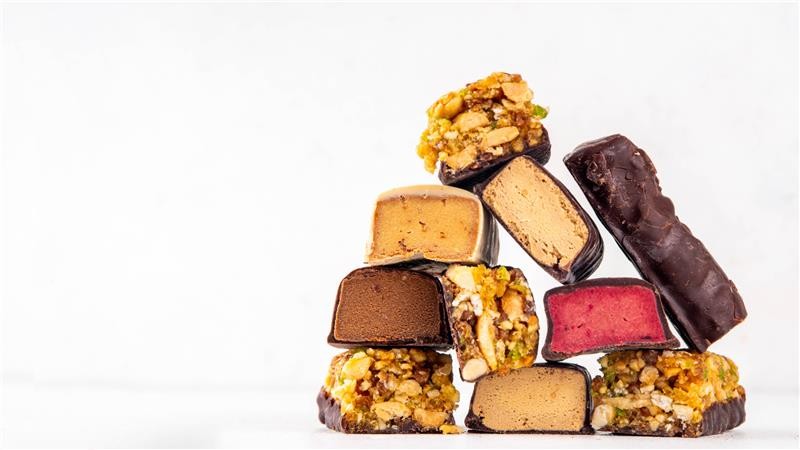Disclaimer: The views expressed in this opinion piece are those of the author and don’t necessarily reflect the views of The Food Institute.
In 1992, Irwin Simon, a veteran of Haagen-Dazs and Slimfast, set out on his own. As he recounted in a 2020 interview, he bought four separate businesses in the health food category, merged them, and took the new company public in a tiny offering. By mid-2015, Hain stock had returned well over 4,000%, and Hain had become one of the biggest players in organic and natural food. Its portfolio of brands including Celestial Seasonings, Garden of Eatin’, and gluten-free manufacturer Rudi’s — among many, many, others — drove $2.7 billion in revenue in fiscal 2015.
The seven-plus years since Simon’s departure, however, have been brutal.
Hain stock has collapsed; incredibly, shares are now in the red across their 33-year history. In 2016, an accounting issue scared off investors and eventually led to a rebuke from the Securities and Exchange Commission. Simon departed in 2018 and would soon enter the cannabis industry; according to multiple reports he had tried, and failed, to sell Hain in the years prior. Three successive CEOs have tried, and mostly failed, to stem the decline in Hain’s profits and stock price.
Simon’s acquisitive strategy — Hain incredibly bought 55 businesses across 25 years — worked at first, when Hain largely had the better-for-you category to itself. But as former CEO Mark Schiller noted at a 2018 Investor Day, new entrants arrived, and the management teams in place following Simon’s departure simply weren’t efficient enough to compete.
From Organic Boom to Bust
By that point, Hain incredibly had more than 130 co-manufacturers, over 50 brands, and thousands of SKUs. Most of those brands operated relatively independently; company-wide infrastructure was minimal. Large retailers became frustrated because different Hain brands were shipped to stores and distribution centers at different times — often in half-empty trucks that slowed receipts and hurt Hain’s own profit margins.
Schiller’s response was to create a more focused, more centralized Hain. Over a four-year tenure, over 20 brands were divested. Hundreds of SKUs were discontinued. And by 2021, it seemed like the strategy was working. Organic growth (not of organic food, but in the sense of like-for-like accounting for divestitures) turned positive. Hain stock more than doubled in three years.
In retrospect, however, Hain wasn’t fixed. It was simply a still-leaky boat riding the rising tide of post-pandemic trends, most notably higher grocery spending. Indeed, even in fiscal 2021 (ending June), organic revenue declined at the same time most food manufacturers were posting banner results. And as the environment normalized, Hain’s old problems returned.
Margins Shrink, SKUs Vanish
Schiller departed in 2022; more SKUs were cut and more businesses were sold. New CEO Wendy Davidson somewhat reversed the centralizing strategy, arguing that local control — including overseas, where Hain has performed better this decade — would create a more responsive and nimble strategy.
It hasn’t worked. Sales growth not only has stayed negative, but the trend has accelerated: in fiscal 2025, organic revenue declined 7%. In the fourth quarter (the calendar second quarter) of the year, volume fell a stunning 11% year-over-year.
Hain expects another year of declines in fiscal 2026. What has been far more concerning is that gross margins too have fallen, in part because by management’s own admission, the company hasn’t been able to take pricing to keep up with cost inflation.
And after essentially a decade of turnaround efforts, to some extent, Hain is continuing the same strategy. Interim CEO Alison Lewis said on the first quarter 2026 call that another 30% of SKUs will be cut. In North America, Hain this year exited the meat-free market, further shrinking its business.
Natural Food Empire Nears Expiration Date
The argument from management is that a narrower, sharper focus on the best brands will allow the company to return to growth. The plunging Hain stock price shows that argument simply doesn’t work anymore. The problem is precisely that there aren’t problems left to fix.
Under Schiller and even Davidson, there was clear work to do in terms of basic execution, marketing, and infrastructure. Hain has spent close to a decade doing that work, and yet results continue to go in the wrong direction.
With $700 million in debt maturing late next year, investors fear a restructuring is on the way.
Unless something changes quickly and dramatically, Hain looks like it has run out of time.
About the author: Vince Martin is an analyst and author whose work has appeared on multiple financial industry websites for more than a decade; he’s currently the lead writer for Wall Street & Main. He has no positions in any securities mentioned.
Food for Thought Leadership
This Episode is Sponsored by: Performance Foodservice
How important is it as a food distributor to build a brand for foodservice – especially since consumers may never see or recognize it? Mike Seidel, vice president of procurement at Performance Foodservice Corporate, shares how the company views the development of its existing foodservice brands, including Roma and Contigo, and how they helped in the creation of its most recent Mediterranean concept Zebec.










